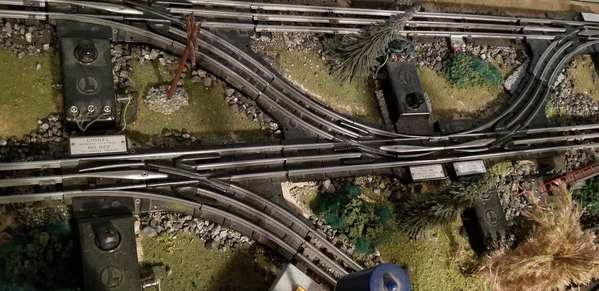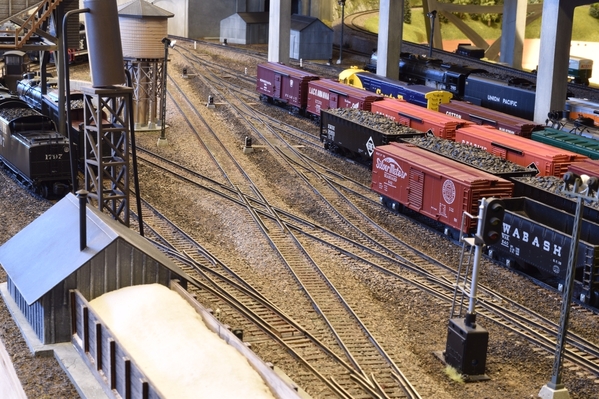This photo shows 022 switches in a row with fixed voltage plugs on my layout between the 2 independently powered main lines:

I have never had a problem running a fast train taking the straight track on the switches down each of the main lines.
When taking the curve on the switches and to go from one main line to the other, I avoid derailments by running the train slow and smooth through the switches with the power set on approximately the same voltage on each throttle of the Z4000 transformer (each throttle provides power to each of the main lines).
I cannot remember a Postwar operating car with sliding shoes uncouple or unload running through these switches.
I have a passion for the Postwar operating coal dump cars (as shown in my other recent thread), milk cars, and log dump cars, often running unit trains of 8 to 11 cars. IMO, the key to avoiding derailments of them is to keep their wheels properly lubricated, run them smoothly and at slow or moderate speed.
Arnold












